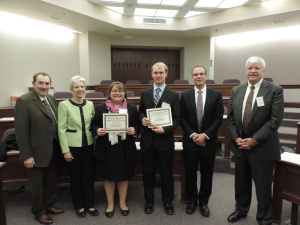Plant a tree, have a child, write a book, and win a pie-eating contest. That is the list of things that, in my humble opinion, every man should do in order to ensure a measure of immortality. Luckily I can say I have already done the last one. Coincidentally, I accomplished it during Thanksgiving week. Here’s the story:
To be honest, I had never celebrated Thanksgiving before in my life, so I was new to the whole cranberry and turkey dinner thing. I didn’t know much about what was being celebrated so in my eyes, it all looked like a second fall break (only this time, there were Black Friday offers in the middle). Shops and advertisers had long ago started shooting their fall artillery by decorating every single corner of the city with pumpkins and autumn leaves, and e-commerce websites were counting the days before the big sales started. I did not have anything against it, but I felt that Thanksgiving had to be something more than just people queuing outside stores, waiting to get inside to get the best deals like I had seen on TV in previous years. And I was right.
Not long before the holiday, I received an email from Simon Business School inviting students to get together to enjoy a Thanksgiving dinner. There was going to be turkey and stuffing, and even vegetarian turkey for those who don’t eat meat. Everyone was invited to have a good time, and that was the only important thing. I decided to go and leave my prejudices behind. Maybe it was not just a commercial thing like I thought, and if these people were inviting me just because, then there had to be a reason to celebrate.
When I got there, I couldn’t have been happier with my decision. Everyone at the party was friendly and amicable. People were introducing each other and talking about their projects and dreams, their pasts and futures. Organizers were joyfully serving typical Thanksgiving dishes and explaining how they were prepared, what ingredients were in them, and even telling stories about how they used to celebrate when they were children. It did not seem like a marketing campaign or a fashionable trend. These people’s eyes were shining as they remembered the way their mothers used to prepare the same foods for them or how their fathers took them to see a football game at this time of year. Thanksgiving seemed to be deeply rooted in these people’s lives, a cultural, historical and, for some, even religious occasion to give thanks for what they had by serving others – something we should all imitate and do, whatever our creed is, wherever we come from.
It was while I was under this state of Thanksgiving excitement, and inspired by this excessive amount of contagious happiness, that I decided to sign myself up for a pie-eating contest. When in Rome… do as the Americans do… and so I did. I was going to do my best, I was going to be part of the celebration too, and just as others had cooked or laid the table, my role now was to eat that pie and show my gratitude to this University that had opened its arms to me.
Ready… Set… Go! I smashed my face into the pie and started taking the biggest bites I could, while my cheeks and forehead were totally covered in pumpkin and cream! Time was running out and I had to devour this pie and… well, then someone told me I could use a spoon, like the rest of the participants. I had thought it was the kind of contest where people can’t use their hands (like the ones you see on TV) but it did not matter. I was a little surprised and embarrassed but I continued until my plate was empty. The end of the story is: I won the contest! But even better, I got the best of all prizes: an evening surrounded by nice people that I will always remember with a smile on my face.
– Agustin Baretto ’15 (MS)







